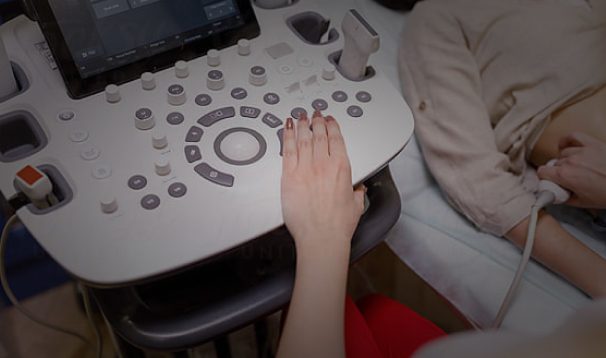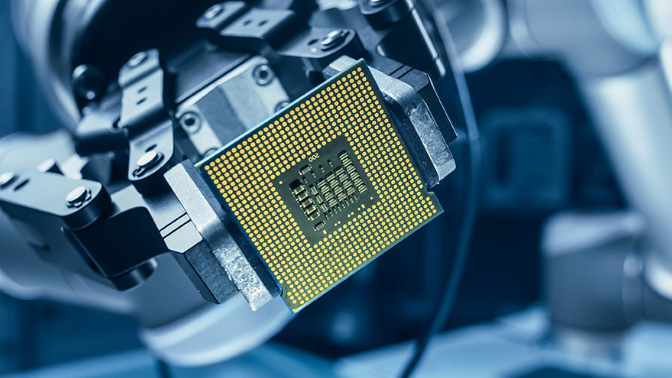Imagine walking into a clinic with a wearable device that can download your health record or using a quick blood test or body scan that can help the clinician determine your prognostic profile and inform you if there is any follow-up required. In case there is something wrong, you will be given optimal therapy. If no optimal therapy exists, AI will come to the stage to provide you with a tailored one based on the lessons learned from the outcomes of all the patients that came before you.
Despite a popular belief, the Lab of the Future does not look like a fluorescent-lit room. Instead, it is a network of virtual and physical spaces with cellular biology, and robot-guided molecular labs test predictions of new chemicals generated in the cloud; smartphones and wristwatches monitoring compliance and collecting data over time; and networking systems enabling personnel to lower the effort and the time needed to onboard a new device into their lab in just a few days rather than months. All these technologies already exist, but the Lab of the Future will connect them in constellations of discovery. And AI will play one of the major roles in this laboratory pursuit.
AI is no longer a “nice-to-have “but a “must-have”. On top of this, as COVID-19 unfolded, biopharma and life science companies quickly turned to AI to conduct virtual trials, identify candidates for vaccines and drugs, conduct virtual trials, and build resilience and adaptability in manufacturing and supply chain capabilities. AI-based solutions are already being applied in the Lab of the Future to increase lab efficiency, support research, and development, minimize cost and human errors and decrease manual work.
Streamlining lab activities and reducing manual work
Many new AI technologies can predict a system failure weeks before it occurs. They can even schedule efficient and convenient repairs or installations for all the technology and machinery and monitor predictive maintenance data and supply chain information to automatically schedule replacement parts and substance deliveries. AI technology handles it by itself, instead of employees carrying the burden of machine maintenance, thus increasing your overall efficiency.
When it comes to day-to-day lab activities, AI can reduce manual tube handling and sorting, allowing your employees to focus on data analysis. Machine learning modernizations have the ability to transform many human-based, manual tasks and greatly increase the efficiency of laboratory processes.
Here at HTEC Group, we leverage AI to help shape the future of interconnected labs. When asked how teams are applying AI, Sasa Bungin, Senior Engineering and Delivery Manager at HTEC, explained:
“One of the examples where AI has found its way into our projects is when we leverage it to automate the manual work of lab workers as well as the scheduling of all daily operations performed by devices and people. Before, workers used to primarily rely on manual work, but now they can have a clear overview of the entire timeline for each of their employees in big systems like R&D labs or QC labs.”
Making smarter decisions and better diagnoses
Making diagnostic and clinical decisions can be challenging and time-consuming, especially when it comes to rare diseases. AI technology enables companies to analyze different types of data through machine learning algorithms and make these types of decisions more accurately and quickly.
Today’s labs are using these advanced methods supported by AI algorithms to test samples to give more accurate answers to clinical questions more efficiently, which would otherwise be challenging for employees to manage. These findings are then compared with specimens from various health systems across demographics and locations to detect problems and diagnose patients. And, since more and more data will be transferred through AI systems in the upcoming years, this technology will only become more accurate.
“We used AI to create a smart ecosystem that will automate the processes and enable faster, smarter, and more precise calibrations for some advanced analytical methods for calculating the composition of products. We moved it from the lab’s desktop and tabletop devices to the cloud, where the computing power is much higher, the availability is cheaper, and the reach is much bigger,” says Sasa. “It’s a single solution that does not require having many physical devices distributed all over the world. We created software that augments the capabilities of those devices and provides end consumers with much more value than previous standalone devices did. This will significantly cut costs and improve overall efficiency.”
Minimizing costs and human error
In addition to helping make better clinical decisions, AI’s capability to sort through data can be highly cost-effective. With AI, you can significantly reduce the time it takes to look through specimens and make connections between data sets. This way, your employees can focus on things that matter. Leveraging technology to perform analytical tasks opens doors for a more efficient workforce, and an increase in productivity which saves a lot of money along the way.
Moreover, AI technology can reduce human error usually caused by analyzing data manually. Machine learning algorithms are completely standardized and automated, without much need for human intervention. By eliminating unnecessary instances of human error, you are able to create a highly accurate laboratory system. And, most interestingly, AI becomes smarter the more data it encounters and the longer it is run, making the software become even more precise.
“AI is already used in the life science industry, Biofarma, pharmaceutical industry, areas of bioinformatics, predictive toxicology, biochemical modeling, and others. To bring digital transformation in a lab, Pharma, Life Science and LabTech companies will not only need to need to take full advantage of the AI industry methods, but also form partnerships with digital health and big tech companies. This will provide them with a cost-effective and fast path to building new capabilities, to be able to get ahead of leapfrog competitors. The sweet spot? Building solutions across the pharmaceutical value chain and healthcare ecosystem that will reduce menial work, boost efficiency and offer better patient outcomes.” — Piet Schilder, Business Development – LabTech and FinTech Solutions
Towards the lab of the future
Where are you on your digitalization journey? Whether it involves control and operating analyzers, embedded solutions, telemetry, sensors, or solutions powered by AI or IoT, we provide advanced tech solutions that will help you bridge analog islands in a digital ocean and help you envision a future of interconnected labs. Reach out to our experts to learn how we can help you advance from science and technology to turn the tide of innovation in your digital lab.
How do we do it? Check out our Services page.













